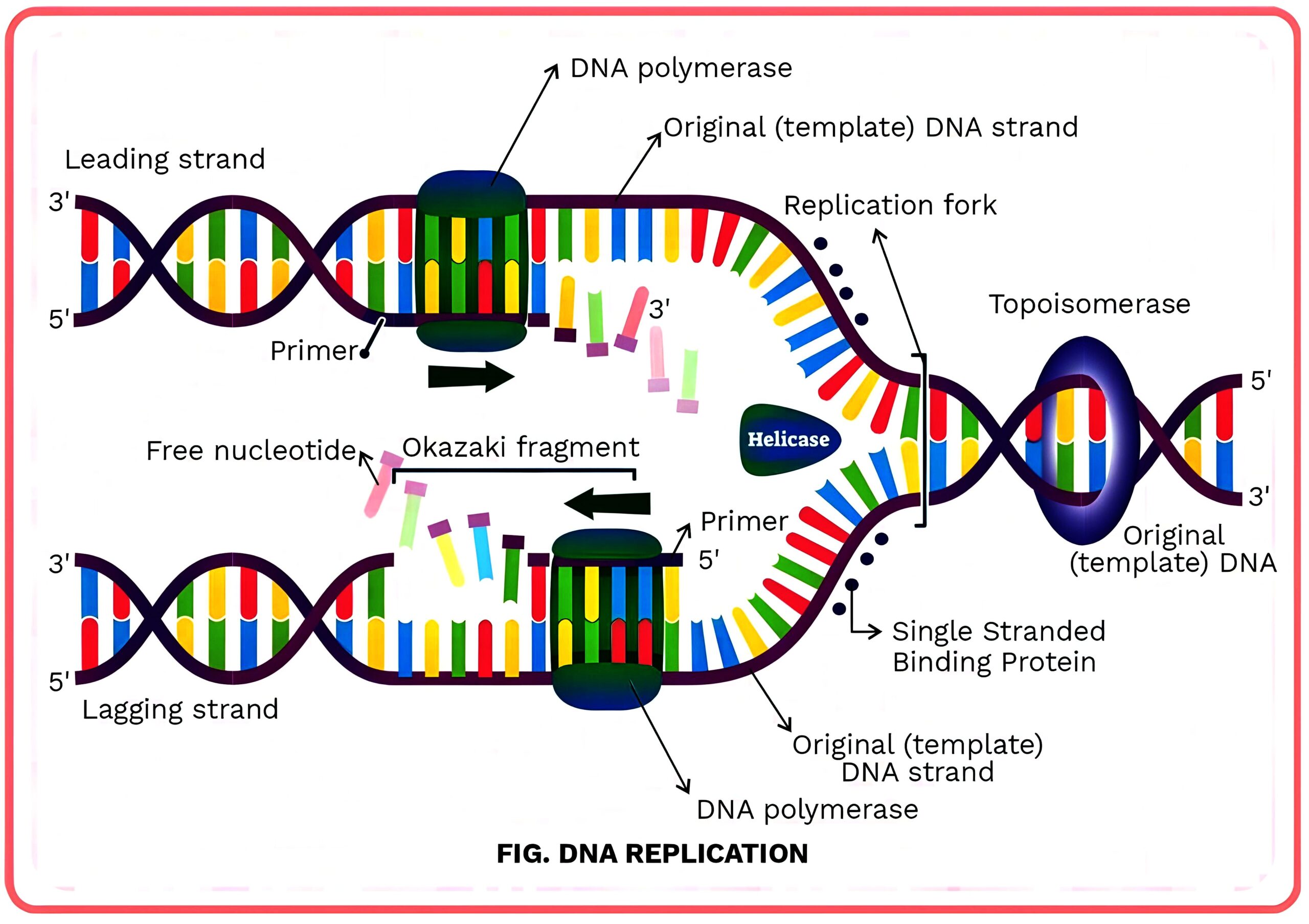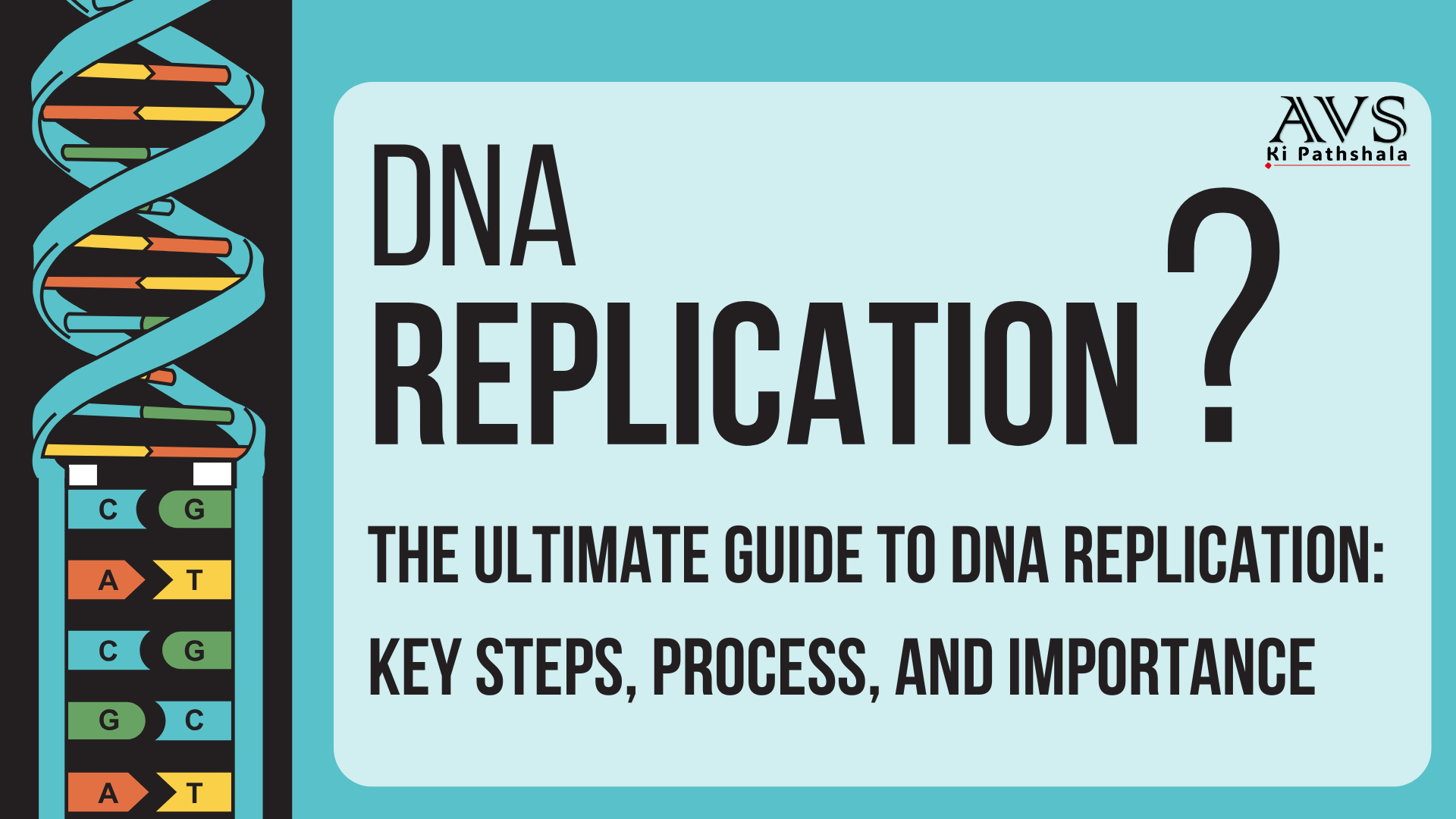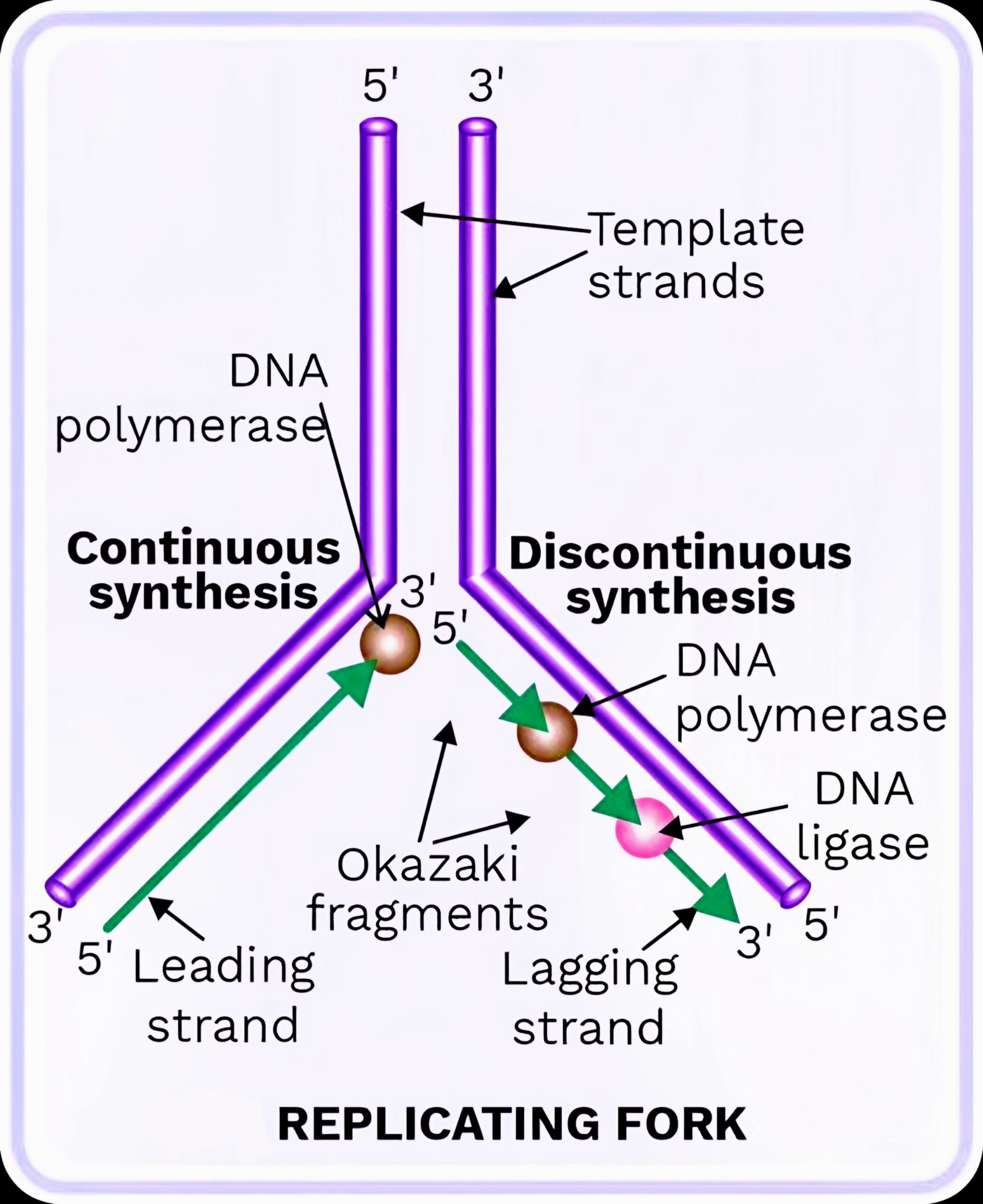The Ultimate Guide to DNA Replication: Key Steps, Process, and Importance
DNA replication is one of the most intricate and essential processes in cellular biology, underlying the transfer of genetic information from one generation to the next. It is a finely tuned molecular mechanism that guarantees each new cell inherits a complete, accurate copy of DNA. By dividing the DNA molecule into two strands, replication uses a “semi-conservative” model, which preserves one original strand in each of the new DNA molecules. This remarkable process not only ensures genetic stability but also supports biodiversity, enabling mutations that can lead to evolutionary changes over generations.
In addition, DNA replication is an area of keen focus in educational boards like CBSE, UP Board, and competitive exams such as NEET, given its fundamental role in cell biology and its applications in genetics and biotechnology. Understanding the steps, enzymes involved, and error-proofing mechanisms of DNA replication provides insights into genetic inheritance, mutation correction, and the molecular basis of many genetic disorders.
In this article, we will delve into the entire DNA replication process, highlighting key steps, crucial enzymes, and the questions that frequently appear in board and entrance exams.
DNA Replication:
DNA replication is the process by which a DNA molecule creates an identical copy of itself. This process occurs before cell division in living cells, ensuring that the newly formed cells contain the same DNA content. DNA replication is a semi-conservative process, meaning each new DNA molecule consists of one original and one newly synthesized strand.
Semi-Conservative Model of DNA Replication:
DNA replication follows the semi-conservative model, which means that one strand of the original DNA is conserved in each new DNA molecule, while the other strand is newly synthesized from nucleotides.
Key Enzymes in DNA Replication and Their Functions:
- DNA Helicase: This enzyme unzips the two strands of the original DNA, separating them by breaking the hydrogen bonds between base pairs.
- DNA Polymerase: This enzyme adds new nucleotides to the DNA strands, forming the daughter strands. It joins nucleotides in the 5′ to 3′ direction.
- DNA Polymerase I: The main repair enzyme.
- DNA Polymerase II: A minor repair enzyme.
- DNA Polymerase III: The primary enzyme involved in the polymerization of deoxyribonucleotides.
In eukaryotic cells, there are five types of DNA polymerase: α, β, γ, δ, and ɛ.
- Deoxyribonucleoside Triphosphates (dNTPs): dNTPs are added to the daughter strand based on the complementary sequence of the template DNA strand. Since DNA replication is an energy-intensive process, the breaking of two terminal phosphates (pyrophosphate) from dNTPs provides the energy needed for replication.
- Single-Stranded Binding Proteins (SSBPs): These stabilize the separated original DNA strands, now called template strands, preventing them from re-pairing.
- RNA Primase: This enzyme synthesizes RNA primers that act as starting points for DNA polymerase to add nucleotides. DNA polymerase can only add dNTPs in the presence of these RNA primers.
- DNA Ligase: This enzyme joins Okazaki fragments on the lagging strand.
- Topoisomerase: This enzyme relieves the supercoil tension created when DNA strands unwind.
- Topoisomerase I: Cuts and seals one of the DNA strands to relieve supercoiling.
- Topoisomerase II: Cuts the DNA but does not seal it. In prokaryotes, this is known as DNA gyrase.
The Process of DNA Replication
DNA replication occurs in the nucleus during the S-phase (synthesis phase) of the cell cycle interphase. It includes the following stages:

- Initiation:
- Replication begins at specific sites on the DNA, known as the origin of replication (Ori sites).
- Prokaryotes: One origin site.
- Eukaryotes: Multiple origin sites.
- dNTPs (dAMP, dGMP, dTMP, and dCMP) are phosphorylated by phosphorylase enzymes and converted into their active forms (dATP, dGTP, dTTP, and dCTP) as triphosphates.
- At the origin, DNA helicase breaks hydrogen bonds between DNA strands, opening the double helix and forming the replication fork.
- Single-stranded binding proteins (SSBPs) attach to the separated template strands, stabilizing them.
- Topoisomerase relieves the tension caused by the unwinding of the DNA strands.
- One DNA strand is in the 3′ to 5′ direction (leading strand), while the other is in the 5′ to 3′ direction (lagging strand).
- Priming: (RNA primer attaches to the daughter strand from 5′ to 3′)
- DNA polymerase cannot add nucleotides directly to DNA, so an RNA primer is synthesized by RNA primase on the 5′ end of the daughter strand.
- This primer provides a starting point for DNA polymerase to begin adding nucleotides.
- Elongation:
- Each strand acts as a template.
- DNA polymerase III synthesizes the new strands by adding nucleotides to the opened DNA strands.
- The leading strand, in the 3′ to 5′ direction, is synthesized continuously from 5′ to 3′ by DNA polymerase, using the RNA primer as a starting point.
- The lagging strand, in the 5′ to 3′ direction, is synthesized in short fragments called Okazaki fragments, each with its RNA primer. DNA ligase later joins these fragments to form a continuous strand.
- Termination:
- Once the Okazaki fragments are completed, RNA primers are removed by RNase-H, and DNA Polymerase I fills in the gaps with complementary nucleotides.
- A termination-binding protein halts the activity of DNA helicase, resulting in the formation of two new daughter DNA molecules.
- Each daughter DNA molecule has one parental strand and one new strand, thus following a semi-conservative method.
- This self-replicating mechanism of DNA ensures that the genetic code is faithfully transmitted from generation to generation.
Important Points:
- Proofreading: DNA polymerase has the ability to check and correct the nucleotides it adds. This proofreading process ensures the accuracy of DNA replication.
- Okazaki Fragments: Short fragments on the lagging strand that are later joined by DNA ligase.
PYQs:
Here are some important questions and concepts related to DNA replication that often appear in CBSE, UP board exams, and NEET. These questions cover foundational aspects and mechanisms crucial for understanding DNA replication, making them useful for high school and pre-medical exams:
- Phases of DNA Replication
- Question: “During which cell cycle phase does DNA replication occur?”
- Answer: DNA replication occurs during the S phase of Interphase, where the DNA duplicates to ensure each daughter cell receives a complete genetic set after cell division.
- Enzymes Involved in DNA Replication
- Common Questions:
- “What enzyme is responsible for unwinding DNA strands during replication?”
Answer: DNA helicase unwinds the DNA double helix, creating a replication fork. - “Which enzyme is responsible for adding nucleotides to the new DNA strand?”
Answer: DNA polymerase synthesizes the new DNA strand by adding nucleotides complementary to the template strand. - “What enzyme joins Okazaki fragments on the lagging strand?”
Answer: DNA ligase links Okazaki fragments on the lagging strand, ensuring continuity.
- “What enzyme is responsible for unwinding DNA strands during replication?”
- Common Questions:
- Leading and Lagging Strand Synthesis
- Question: “Explain the difference between leading and lagging strand synthesis.”
- Answer: During DNA replication, the leading strand is synthesized continuously, while the lagging strand is synthesized in short segments (Okazaki fragments), which are later joined by DNA ligase. This is because DNA polymerase can only add nucleotides in the 5’ to 3’ direction, making continuous synthesis impossible on the lagging strand.
- Significance of Replication Fork
- Question: “What is a replication fork, and why is it essential?”
- Answer: A replication fork is a Y-shaped structure formed when DNA helicase unwinds the DNA helix. It allows DNA polymerase and other enzymes to synthesize new strands, ensuring each new cell has an identical DNA copy.
- Types of Mutations and DNA Repair Mechanisms
- Question: “What is a point mutation, and how does the cell repair it?”
- Answer: A point mutation is a change affecting a single nucleotide pair. Repair mechanisms, like mismatch repair, detect and replace incorrect nucleotides, preventing errors from propagating in cell division.
- Genetic Implications of DNA Replication Errors
- Question: “How can errors in DNA replication lead to genetic disorders?”
- Answer: Replication errors not corrected by repair enzymes can lead to mutations, which may result in genetic disorders such as Xeroderma pigmentosum, caused by impaired DNA repair.
Understanding these points thoroughly will not only aid in exam preparation but also build a strong foundation for advanced studies in molecular biology.
Conclusion:
DNA replication is a fundamental and highly precise process that ensures the continuity of genetic information from one cell generation to the next. By employing a semi-conservative mechanism, where each new DNA molecule contains one original and one newly synthesized strand, cells maintain genetic fidelity. This intricate process involves several specialized enzymes, each performing distinct functions—from unzipping the DNA helix and stabilizing strands to synthesizing and joining new nucleotides. The replication process also includes proofreading and repair mechanisms, which significantly minimize errors, preserving the accuracy of genetic information. Consequently, DNA replication upholds the genetic code’s stability, allowing organisms to inherit and transmit essential genetic traits reliably across generations.
To enhance your preparation even further for CBSE 2025 Exam, you can also connect with us on YouTube, where we will guide you through all these topics in a comprehensive manner. To join us on YouTube, simply click the link below, and you’ve already taken your first step towards scoring better marks.
Thank you!
Best wishes to all students!






